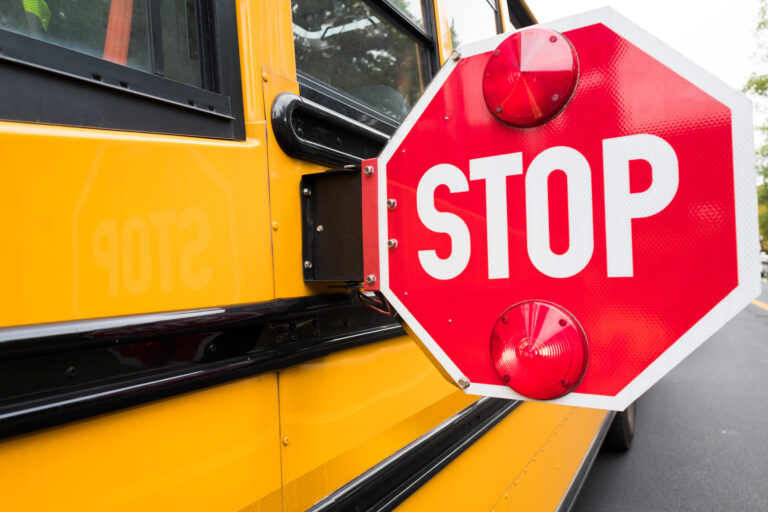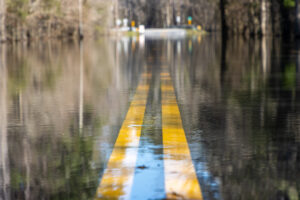Back to School Safety
Some 25 million students nationwide begin and end their day with a trip on a school bus. Designed for safety, with flashing lights, giant mirrors, stop-sign arms and that bright yellow color, students are far more likely to get to school safely when taking a school bus than traveling by car, according to the NHTSA.
Tips for a Safe Ride
Nearly two-thirds of school bus-related fatalities of school-age children occur outside of the school bus. Children, and adults need to do their part to stay safe both in and around school buses:
At the Bus Stop
- Arrive early at the bus stop – at least five minutes before the bus is scheduled to arrive.
- Stand 6 feet (or three giant steps) away from the curb while waiting for the bus.
- Supervise young children.
Around the Bus
- Cross in front of the bus – at least 10 feet (or five giant steps) – and make eye contact with the driver before crossing.
- Never walk behind the bus.
- If you drop something near the bus, do not pick it up; tell the bus driver instead.
Getting On/Off the Bus
- Wait until the bus has stopped and the door opens before approaching the bus or standing up on the bus.
- Use the handrail.
- Secure any loose or hanging objects like straps on a backpack or drawstrings on a hood.
Behavior on the Bus
- Buckle up if seat belts are available.
- Stay in your seat keeping head, arms and papers inside the bus, and talk quietly.
- Keep aisles clear of books and bags.
School days bring congestion
School buses are picking up their passengers, kids on bikes are hurrying to get to school before the bell rings, harried parents are trying to drop their kids off before work. It’s never more important for drivers to slow down and pay attention than when kids are present – especially before and after school.
If You’re Dropping Off
Schools often have very specific drop-off procedures for the school year. Make sure you know them for the safety of all kids. The following apply to all school zones:
- Don’t double park; it blocks visibility for other children and vehicles
- Don’t load or unload children across the street from the school
- Carpool to reduce the number of vehicles at the school
Sharing the Road with Young Pedestrians
According to research by the National Safety Council, most of the children who lose their lives in bus-related incidents are 4 to 7 years old, and they’re walking. They are hit by the bus, or by a motorist illegally passing a stopped bus.
A few precautions go a long way toward keeping children safe:
- Don’t block the crosswalk when stopped at a red light or waiting to make a turn, forcing pedestrians to go around you; this could put them in the path of moving traffic.
- In a school zone when flashers are blinking, stop and yield to pedestrians crossing the crosswalk or intersection.
- Always stop for a school patrol officer or crossing guard holding up a stop sign.
- Take extra care to look for children in school zones, near playgrounds and parks, and in all residential areas.
- Don’t honk or rev your engine to scare a pedestrian, even if you have the right of way.
- Never pass a vehicle stopped for pedestrians.
- Always use extreme caution to avoid striking pedestrians wherever they may be, no matter who has the right of way.
Sharing the Road with School Buses
- If you’re driving behind a bus, allow a greater following distance than if you were driving behind a car. It will give you more time to stop once the yellow lights start flashing. It is illegal in all 50 states to pass a school bus that is stopped to load or unload children.
- Never pass a bus from behind – or from either direction if you’re on an undivided road – if it is stopped to load or unload children.
- If the yellow or red lights are flashing and the stop arm is extended, traffic must stop.
- The area 10 feet around a school bus is the most dangerous for children; stop far enough back to allow them space to safely enter and exit the bus.
- Be alert; children often are unpredictable, and they tend to ignore hazards and take risks.




